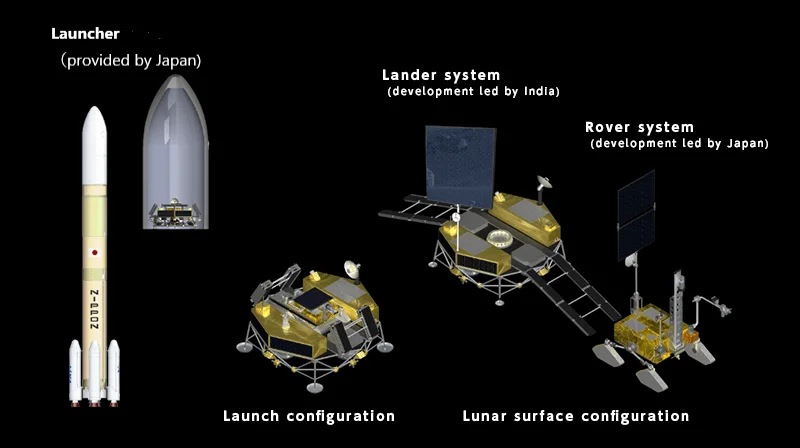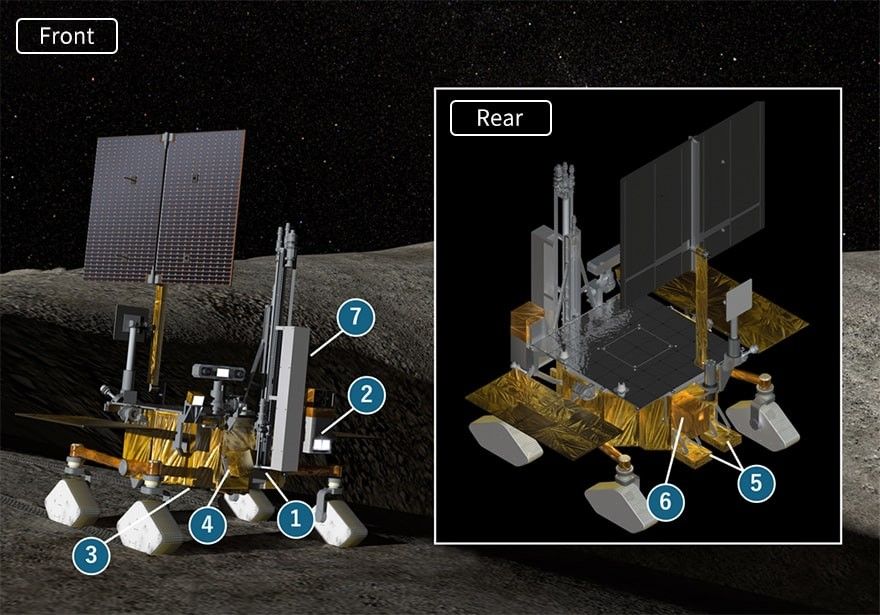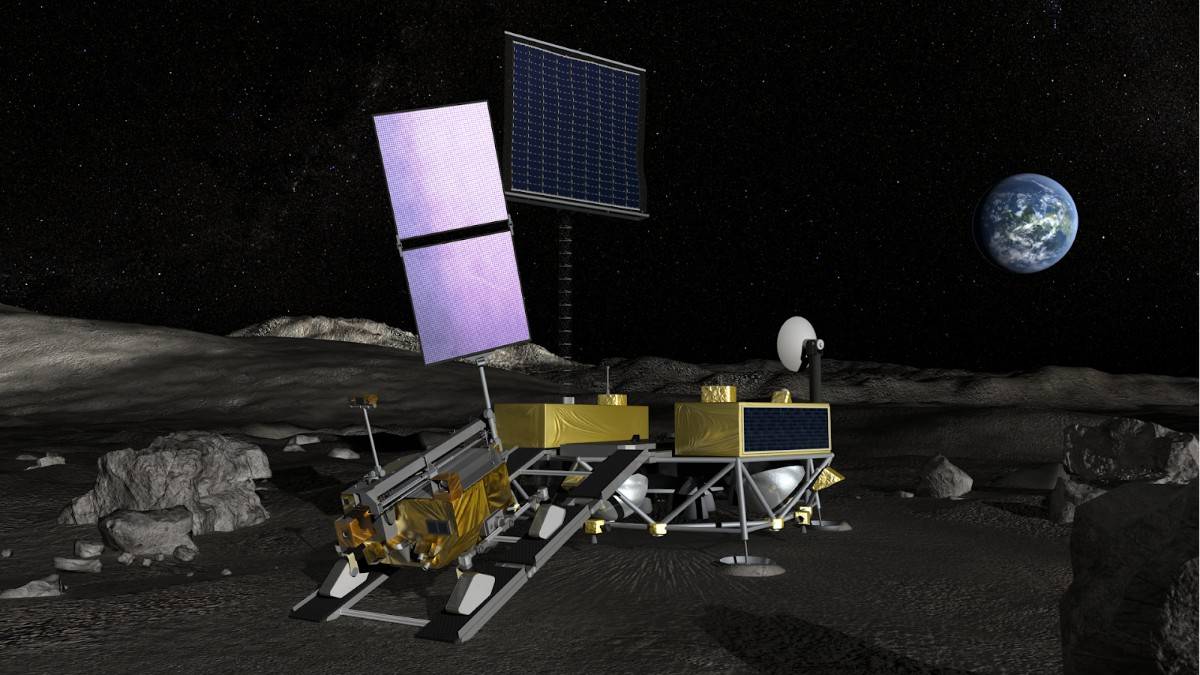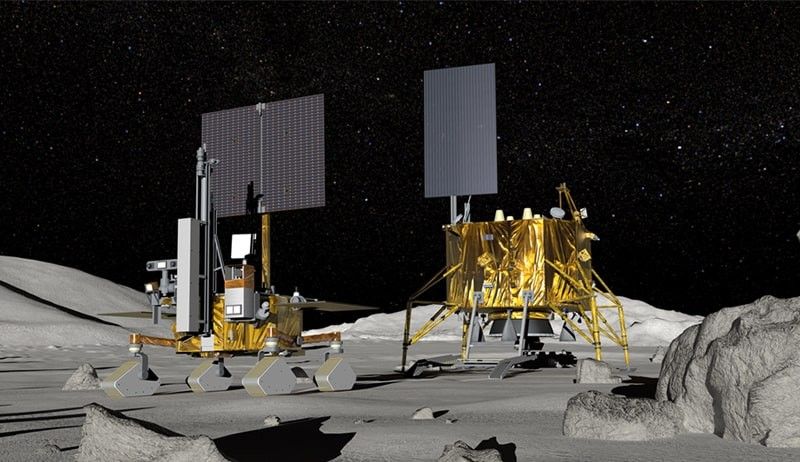A quiet but momentous gathering took place behind the doors of the Indian Space Research Organisation (ISRO) headquarters this past week. In a significant stride toward lunar exploration and resource utilization, the Indian Space Research Organisation (ISRO) and the Japan Aerospace Exploration Agency (JAXA) concluded their third in-person Technical Interface Meeting (TIM-3) on May 13–14, 2025, in Bengaluru.
Over the two days, engineers and scientists pored over technical plans, debated mission parameters, and finalized next steps for a lunar venture that may redefine how humanity sees the Moon, not as a barren rock, but as a mine of untapped potential.
This collaborative effort focuses on the Chandrayaan-5/Lunar Polar Exploration (LUPEX) mission, a joint Indo-Japanese effort to send a robotic lander and rover to the Moon’s south pole, one of the most scientifically and commercially intriguing regions in the solar system, particularly the permanently shadowed regions (PSRs), for water ice and other volatiles.
ISRO + JAXA: A Strategic Alliance
The Chandrayaan-5/LUPEX mission represents a fusion of technological prowess and scientific ambition. ISRO is tasked with developing the lunar lander, while JAXA contributes the rover, which was developed by Mitsubishi Heavy Industries (MHI). The mission is slated for launch aboard JAXA’s H3-24L launch vehicle.
The meeting held on May 13–14 in Bengaluru marked a critical phase of this ambitious mission. The agenda? Finalizing system designs, clarifying roles, and resolving interface issues between the Indian lander and Japanese rover. The collaboration is split as follows:
- ISRO is responsible for building the lander, which must deliver its payload safely to the harsh, shadowed terrain of the south pole.
- JAXA is developing the 350-kg lunar rover, expected to travel across the polar landscape and drill into the surface to depths of 1.5 meters.
- Mitsubishi Heavy Industries is supplying the rover, while the H3 rocket will launch the mission – Japan’s next-gen heavy-lift launcher.
- Instruments from NASA and ESA will also contribute to the payload, making LUPEX a globally backed lunar exploration venture.
What began as a bilateral project is now rapidly evolving into a multilateral cornerstone of Moon research, and potentially lunar industry. This partnership underscores the growing trend of international collaboration in space exploration, pooling resources and expertise to achieve common goals.
Mission Objectives and Scientific Goals

The primary objective of Chandrayaan-5/LUPEX is to investigate the presence and distribution of water ice and other volatiles in the Moon’s south polar region. These resources are crucial for future lunar exploration, as they can potentially be used for in-situ resource utilization (ISRU), reducing the need to transport supplies from Earth. The mission aims to:
- Conduct in-situ analysis of lunar volatiles, including water ice, within PSRs.
- Assess the feasibility of utilizing these resources for sustaining future lunar missions.
- Demonstrate technologies for precise landing, surface mobility, and survival in the harsh lunar environment.
The Technology Behind the Mission

The LUPEX rover, weighing approximately 350 kg, is designed to operate in the extreme conditions of the lunar south pole. Equipped with a drill capable of reaching depths of up to 1.5 meters, the rover will collect subsurface samples for analysis. It will do so armed with cutting-edge instruments, contributed by ISRO, JAXA, the European Space Agency (ESA), and NASA:
- REIWA (Resource Investigation Water Analyzer) – A suite of instruments designed to detect and analyze subsurface volatiles such as water, methane, and ammonia.
- Ground Penetrating Radar (GPR) – To map subsurface structures and detect hidden ice deposits.
- Infrared and Neutron Spectrometers – For identifying chemical composition and the spatial distribution of resources.

The mission of this prospecting gear is to answer questions we are desperate to know: How deep is the ice? How pure? How accessible? And most importantly, can it be harvested? These technologies will advance our understanding of the Moon’s composition so we can hopefully start paving the way for sustainable lunar exploration.
Implications for Space Mining
The Chandrayaan-5/LUPEX mission holds significant value for the burgeoning field of space mining. By identifying and characterizing water ice deposits, the mission could validate the Moon as a viable source of essential resources. Water, in particular, is a critical resource, as it can be used for life support and converted into hydrogen and oxygen for fuel.
Establishing the presence of accessible water ice could lead to the development of lunar bases and refueling stations, reducing the cost and complexity of deep space missions.
A Testing Ground for Space Mining Tech

Moreover, the mission’s focus on ISRU technologies aligns with the long-term vision of utilizing extraterrestrial resources to support human activities in space. Drilling in shadowed, -200°C lunar soil is no small feat. Ensuring electronics survive, traction systems perform, and batteries last is a challenge even for Earth-based Arctic missions. LUPEX aims to test real-world solutions for robotic excavation, mobility on regolith, and surviving multi-day lunar nights.
Its success will offer proof of concept for ISRU (in-situ resource utilization), something that has become the holy grail of off-Earth industry. Successful demonstration of these technologies could catalyze the growth of a lunar economy, attracting investment and fostering innovation in space mining and related industries.
Stepping Stones to a Lunar Economy
For India, LUPEX is a statement of intent. Fresh off the success of Chandrayaan-3, which achieved a historic soft landing near the lunar south pole, ISRO is now extending its reach. Prime Minister Narendra Modi has announced ambitions for a human landing by 2040, and LUPEX is a critical preparatory step for that future.
For Japan, the mission aligns with its strategy to become a major player in cislunar operations and support the Artemis program through data, experience, and potential lunar infrastructure. Together, the two countries are paving the path toward a Moon-based economy, where water is mined, habitats are constructed, and fuel depots support human missions to Mars and beyond.
But LUPEX is more than a bilateral achievement – it signals a shift in the global space narrative. In the 20th century, space exploration was a Cold War-era race. Today, it’s a strategic partnership of mutual scientific and economic interest. LUPEX also demonstrates how non-Western space agencies can co-lead missions of enormous importance. As geopolitical tensions simmer on Earth, space cooperation like LUPEX offers a rare model of diplomacy and unity.
The inclusion of instruments from ESA and NASA further reinforces its value as an international platform. And let’s not ignore the new space mining frontier: With commercial companies eyeing lunar extraction rights, LUPEX could become a benchmark for how governments and public institutions pave the regulatory and technological path forward.
The Moon as the Next Frontier

The successful conclusion of the third Technical Interface Meeting marks a crucial milestone in the Chandrayaan-5/LUPEX mission, which is a stepping stone toward more ambitious endeavors. It’s a quiet but powerful signal that humanity is getting serious about living and thriving off Earth. ISRO envisions a human landing on the Moon by 2040, and the insights gained from LUPEX will be instrumental in planning such missions.
Now that TIM-3 is complete, the teams will move toward:
- Finalizing scientific payloads
- Validating integrated system designs
- Prototyping and environmental testing
- Mission rehearsal simulations
The targeted launch date is tentatively set between 2026 and 2028, depending on hardware readiness and launch vehicle schedules. But even before it lifts off, LUPEX has already sparked interest in lunar economics, international cooperation, and the feasibility of off-world resource extraction.
The mission’s findings could influence the selection of sites for future lunar bases and reshape our approach to utilizing extraterrestrial resources, bringing the vision of sustainable space exploration closer to reality. Plus, ISRO and JAXA combining their strengths exemplifies the potential of international partnerships in advancing space exploration.